Most plant lovers don’t realize how cool it can be to mix different types of pothos in one pot. When you put Golden Pothos next to Marble Queen, their leaves look so different that they create a beautiful, eye-catching display. It’s like turning a regular plant setup into a piece of art!
To make this work, you need to choose pothos types that grow at similar speeds and need the same kind of care. That way, they won’t fight for space or water. But the real trick is knowing one important thing: how to match them so they grow well together.

🌱 Why Growing More Than One Pothos Is a Good Idea
Instead of growing just one kind of pothos, mixing a few in the same pot has some great benefits:
- Easier Care: If the plants need the same light and water, it’s simpler to take care of them.
- Better Growth: They can share roots and get water at the same time.
- Cool Looks: Different leaf colors and patterns make your plant setup look more interesting and fun.
For example, Golden and Neon Pothos look great together because their warm colors match nicely. Jade and Neon Pothos also look cool side by side because their colors pop without clashing.
🌟 Best Pothos Combos to Try
Here are some pothos pairings that look awesome and grow well together:
|
Combo |
Why It Works |
|---|---|
|
Golden + Neon |
Warm colors that blend beautifully |
|
Jade + Neon |
Bold contrast without messy patterns |
|
Pearls & Jade + N’Joy |
Soft, elegant look with gentle variegation |
|
Marble Queen + Snow Queen |
Similar growth and matching leaf styles |
|
Manjula + Hawaiian |
Fancy leaves that look great together |
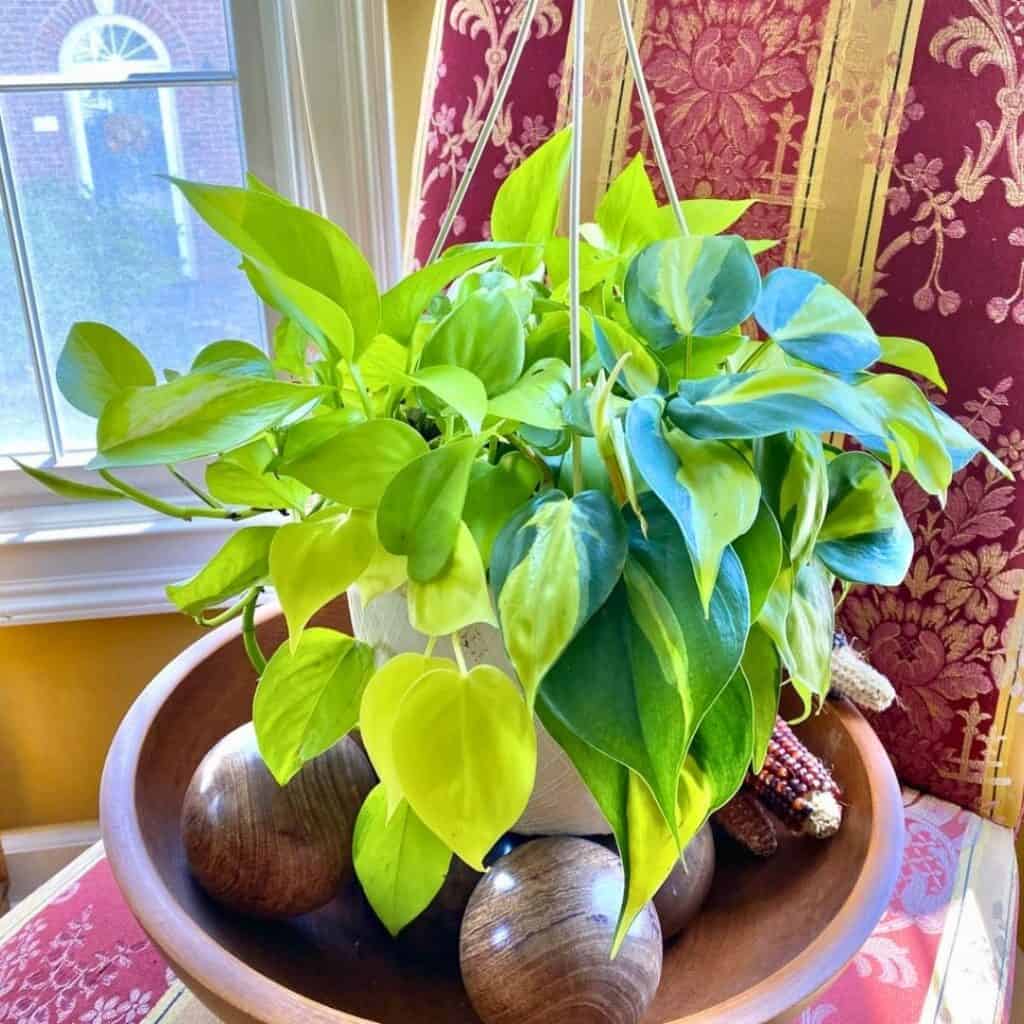
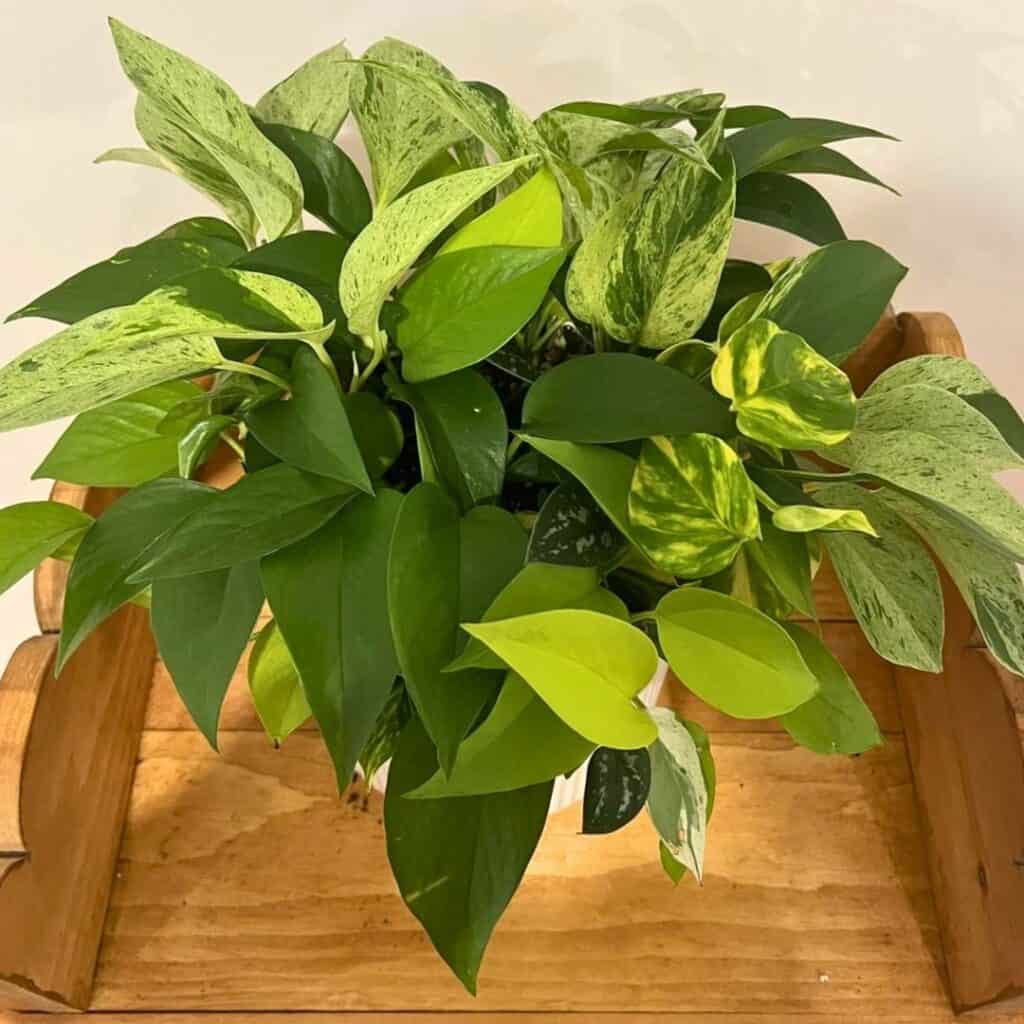

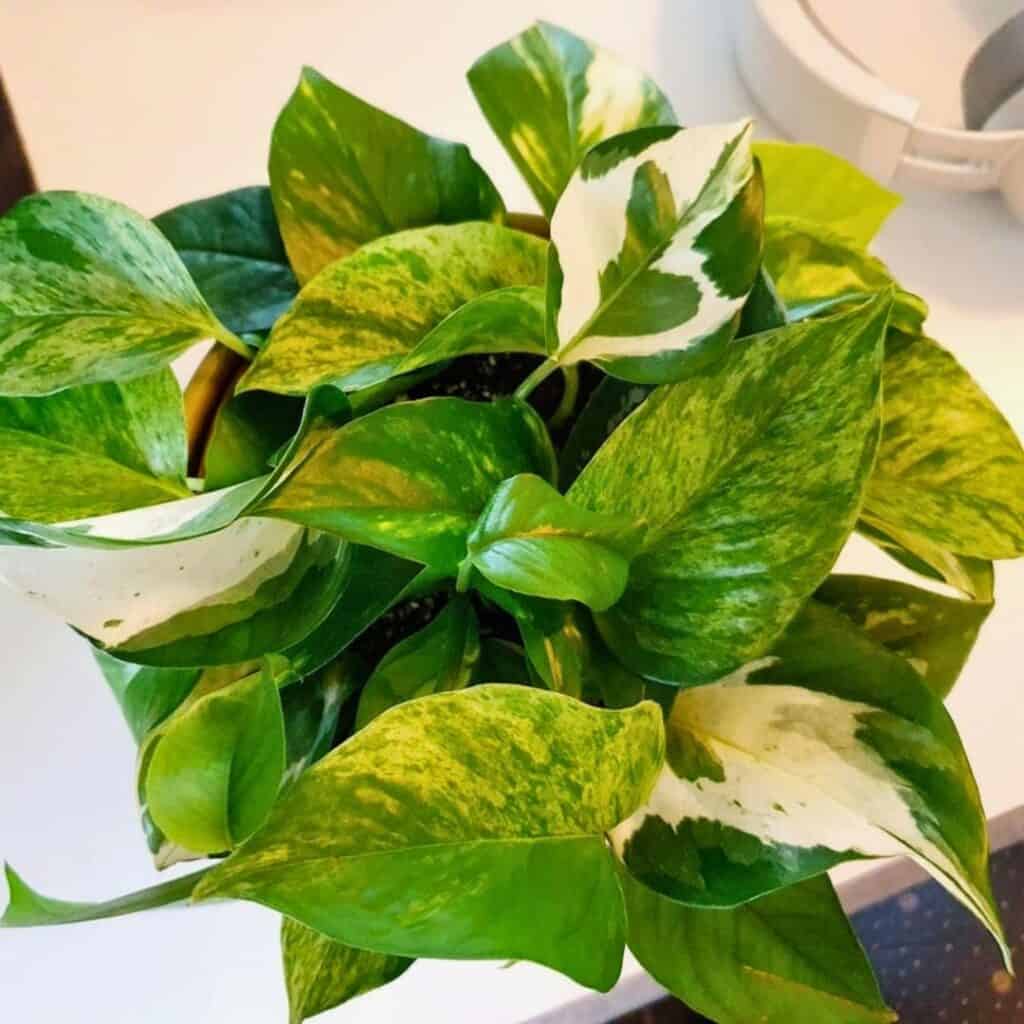
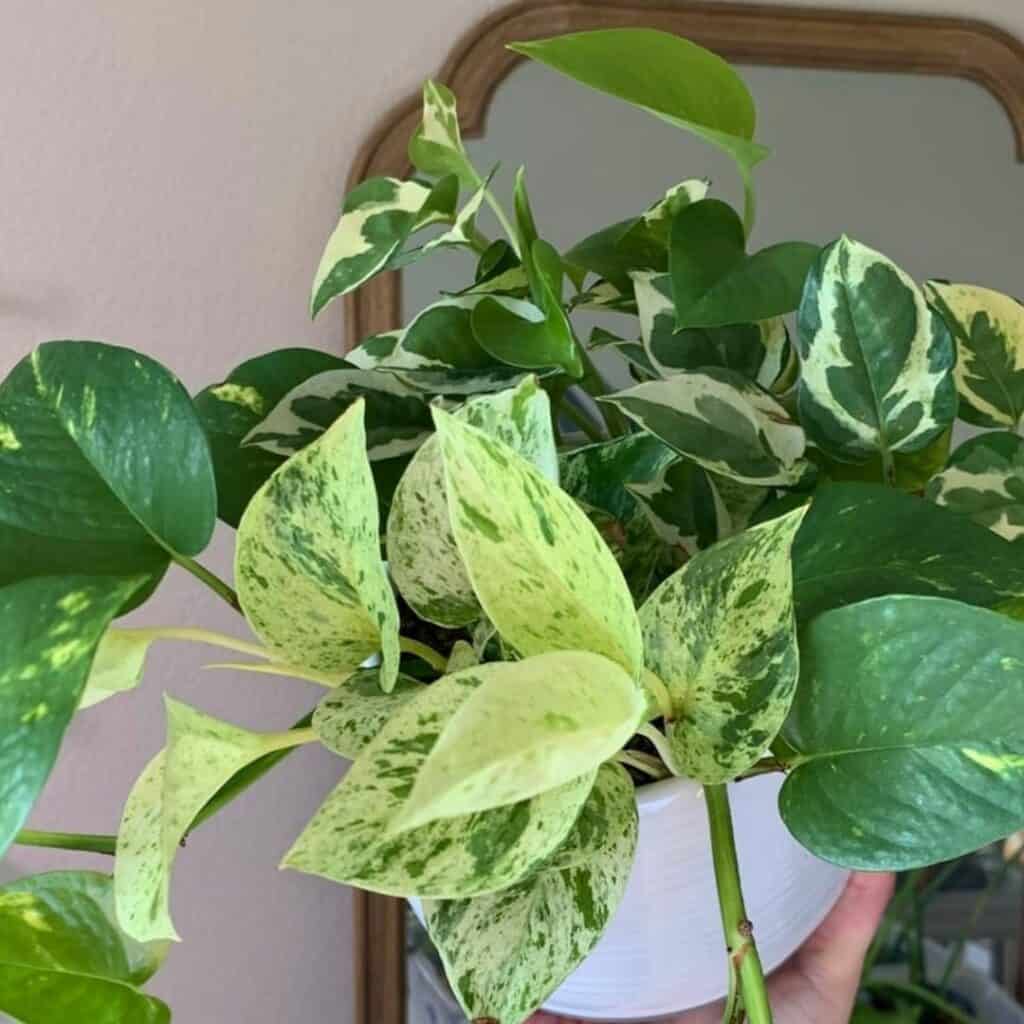


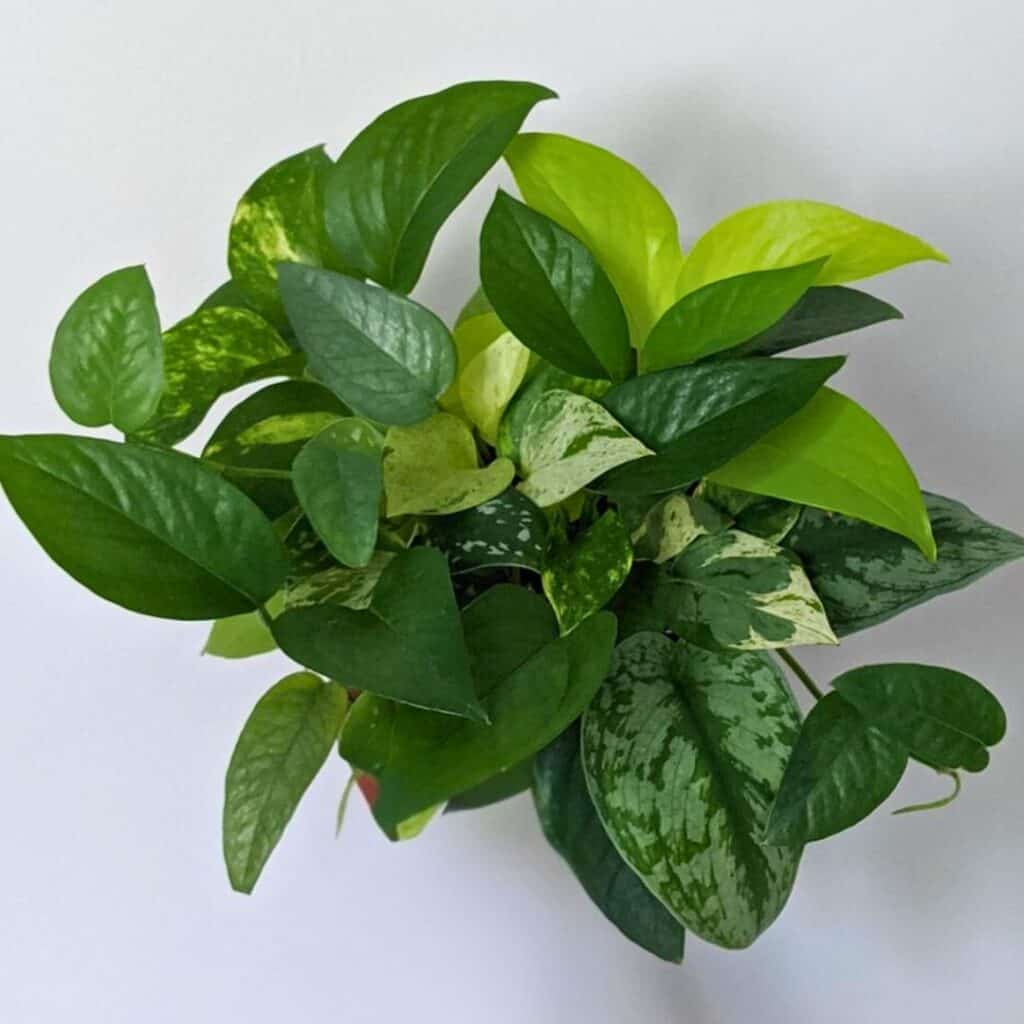
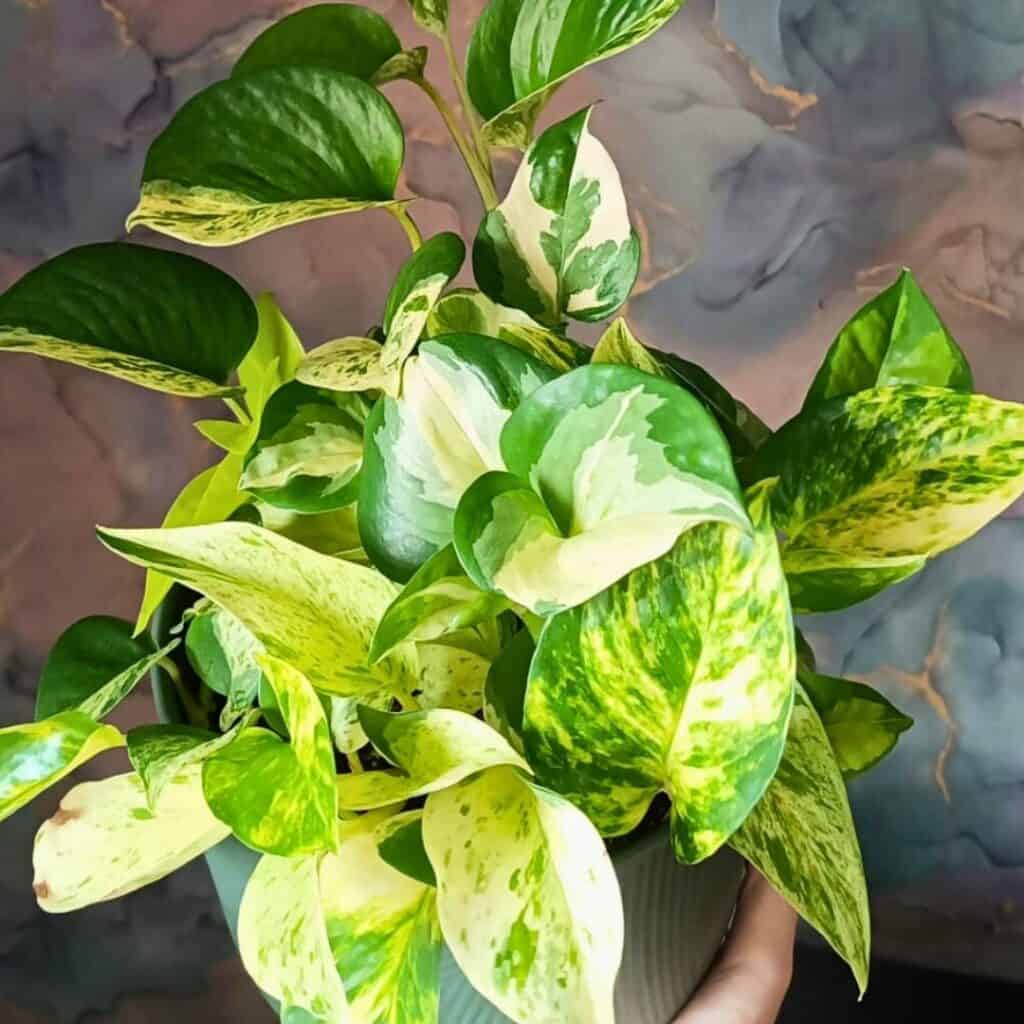

🌞 How to Care for Mixed Pothos Plants
To keep your pothos happy when they share a pot, make sure they get the same care:
- Light: Most pothos like bright, indirect sunlight. Variegated ones (with white or light patches) need more light.
- Water: Water once a week or when the soil feels dry. Check the soil every few days to avoid overwatering.
- Soil: Use soil that drains well. Mixing in perlite or coconut coir helps.
- Fertilizer: Feed with liquid fertilizer every 4–6 weeks during spring and summer. You can also use slow-release fertilizer once per season.
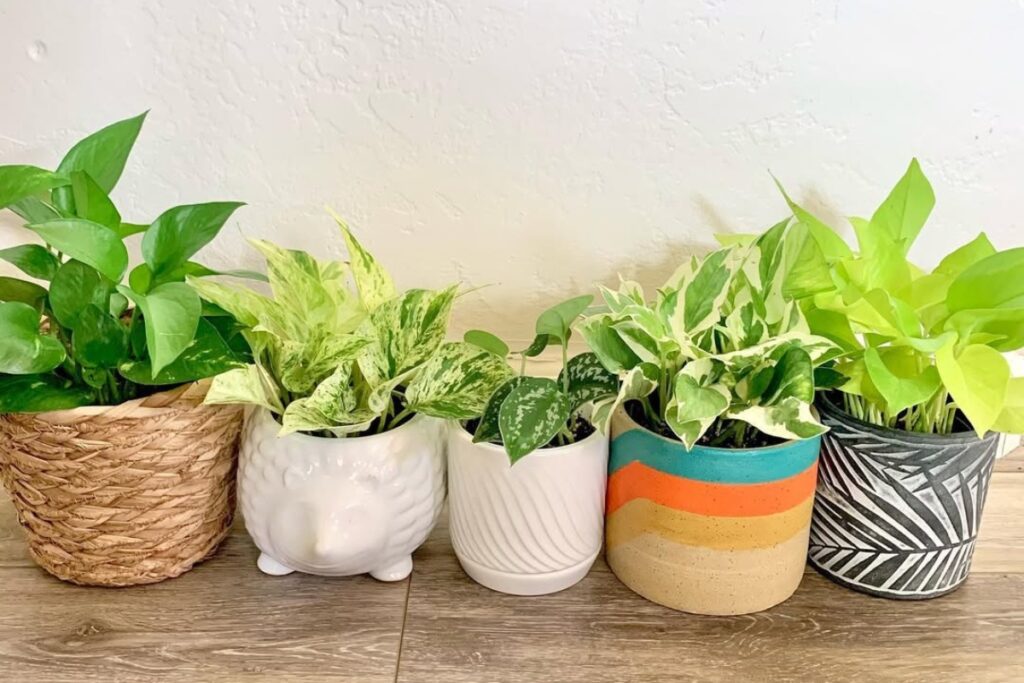
💡 Tips for Success
- Light Matters: East-facing windows are perfect. They give gentle morning sun without burning the leaves.
- Match Leaf Sizes: Big-leaf pothos need less water than small-leaf ones. Pair similar sizes for easier care.
- Watch Growth: If one plant grows faster, it might need more food. Don’t over-fertilize—too much can hurt the roots.
🌿 How to Make Your Pothos Combo Look Great
Want your pothos mix to really stand out? Try these ideas:
- Golden + Neon: Bright and cheerful.
- Jade + Neon: Bold and clean.
- Pearls & Jade + N’Joy: Soft and stylish.
- Marble Queen + Snow Queen: Elegant and balanced.
If you’re planting cuttings, switch between types as you plant to make the mix look natural and fun.
